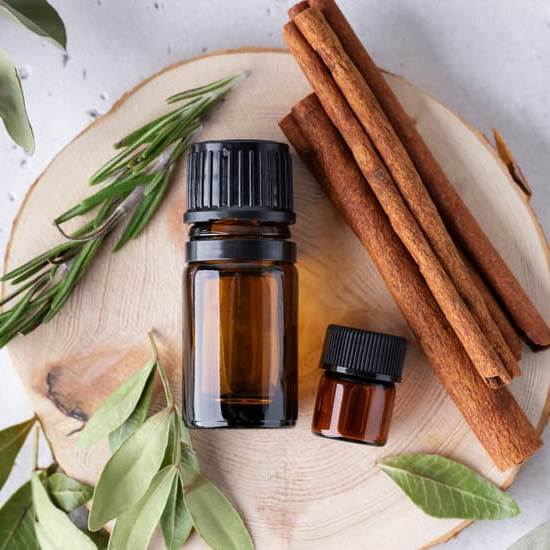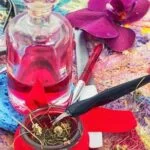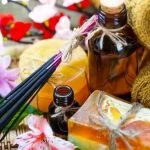Aromatherapy has been used for centuries as a natural way to promote relaxation, reduce stress, and enhance overall well-being. One simple and effective way to incorporate aromatherapy into your daily routine is by creating your own aromatherapy spray. In this article, we will explore the benefits of aromatherapy and walk you through the process of making a simple yet customized aromatherapy spray that can be tailored to suit your personal preferences.
Aromatherapy involves the use of essential oils extracted from plants to improve physical, mental, and emotional health. These oils can be inhaled or applied to the skin, and each essential oil has its distinct properties that can target specific concerns such as anxiety, insomnia, or fatigue. By understanding the different types of essential oils commonly used in aromatherapy sprays, such as lavender, peppermint, and eucalyptus, you can create a personalized blend that suits your needs.
When making an aromatherapy spray, choosing the right base is crucial. The base determines the overall consistency and performance of your spray.
Whether you opt for distilled water for a light mist or witch hazel for added skin-soothing properties, it’s important to select a base that complements the intended use of your spray. In the following sections, we will delve into how to mix and blend essential oils correctly and discuss various customization options for your unique aromatherapy spray to customize it according to your liking.
Understanding Aromatherapy Oils
Aromatherapy oils are the foundation of any aromatherapy spray, providing both a pleasant scent and potential therapeutic benefits. There are many different types of essential oils used in aromatherapy, each with its own unique properties and effects on the mind and body. Some of the most commonly used essential oils in aromatherapy sprays include lavender, peppermint, and eucalyptus, all of which offer distinct benefits.
Lavender Oil
Lavender oil is one of the most popular essential oils used in aromatherapy due to its calming and relaxing properties. It is often used to promote a sense of peace and tranquility, making it an ideal choice for an aromatherapy spray intended for stress relief or relaxation. Additionally, lavender oil has been shown to have mild sedative effects, making it useful for promoting a restful night’s sleep.
Peppermint Oil
Peppermint oil is known for its invigorating and energizing qualities. It has a refreshing scent that can help clear the mind and increase focus and alertness. Peppermint oil is often used in aromatherapy sprays designed to provide a mental boost or combat fatigue. Additionally, it may also help alleviate symptoms of headaches or nausea when used in a spray form.
Eucalyptus Oil
Eucalyptus oil is valued for its ability to promote clear breathing by opening up the airways. It has a fresh, clean scent that can help ease congestion and promote easier breathing, making it a popular choice for use during cold and flu season. Eucalyptus oil is also believed to have antibacterial properties, adding another layer of benefit to an aromatherapy spray containing this essential oil.
Understanding the individual benefits of these commonly used essential oils can help you choose the right combination for your homemade aromatherapy spray based on your specific needs and preferences. Whether you are looking to create a relaxing blend for stress relief or an invigorating mix to boost your mood, taking into account the unique properties of each essential oil will allow you to customize your spray effectively.
The next step will involve selecting the ideal base for your concoction before blending them together following precise instructions on how to make simple aromatherapy spray – ensuring best results.
Choosing the Right Base for Your Aromatherapy Spray
When choosing the best base for your aromatherapy spray, it’s important to consider its intended use and the desired effect you want to achieve. For example, if you plan to use the spray as a facial mist or body spray, aloe vera gel may be the most suitable option due to its hydrating properties.
On the other hand, if you intend to use the spray as a room freshener or linen spray, distilled water or witch hazel may be more appropriate choices.
In addition to considering the properties of each base ingredient, it’s also essential to take into account any specific sensitivities or allergies you or potential users may have. Some individuals may have sensitive skin that reacts negatively to certain ingredients, so it’s important to choose a base that will be gentle and non-irritating. By carefully evaluating these factors, you can select the best base for your aromatherapy spray that aligns with your preferences and requirements.
| Base Ingredient | Properties |
|---|---|
| Distilled Water | Simple and cost-effective |
| Witch Hazel | Natural astringent qualities |
| Aloe Vera Gel | Soothing and moisturizing effects |
Mixing and Blending Essential Oils
When it comes to making your own aromatherapy spray, mixing and blending essential oils is a crucial step in creating the perfect scent for relaxation and stress relief. Here is a step-by-step guide on how to create the perfect blend of essential oils for your aromatherapy spray, including the correct ratios and methods for mixing.
1. Choose Your Essential Oils: Start by selecting the essential oils you want to use in your spray. Popular choices include lavender, peppermint, eucalyptus, lemon, and tea tree oil. Each essential oil offers different benefits, so consider what you are looking to achieve with your aromatherapy spray.
2. Determine Ratios: Once you have chosen the essential oils for your blend, you will need to determine the appropriate ratios for mixing. A common ratio is 30 drops of essential oil per 2 ounces of base (such as distilled water or witch hazel). However, this can vary depending on personal preference and the strength of the oils being used.
3. Mixing Methods: When blending your essential oils, it is important to mix them thoroughly to ensure that the scent is evenly distributed throughout the spray. You can do this by gently swirling or shaking the bottle to combine the oils with the base solution.
Once you have followed these steps, you will have created your own custom blend of essential oils for your aromatherapy spray. This personalized touch allows you to tailor the scent to your specific needs and preferences.
Creating and Customizing Your Aromatherapy Spray
Once you have chosen the base for your aromatherapy spray and blended your essential oils, it’s time to get creative and customize your spray to make it truly unique to your preferences. Adding additional ingredients such as dried herbs or flower petals can enhance the scent and therapeutic benefits of your spray. Here are some tips on how to personalize your aromatherapy spray:
- Dried Herbs: Adding dried herbs such as lavender, rosemary, or chamomile can not only add a pleasing visual element to your spray but also infuse it with their unique aromas and properties. For example, lavender is known for its calming effects, while rosemary is invigorating and refreshing.
- Flower Petals: Delicate flower petals such as rose, jasmine, or calendula can add a touch of elegance to your spray while imparting their delightful floral scents. Each type of flower has its own set of therapeutic benefits, so choose one that resonates with you and complements the other ingredients in your blend.
- Citrus Zest: For a burst of freshness and energy, consider adding citrus zest from lemons, oranges, or grapefruits to your aromatherapy spray. The bright, uplifting aroma of citrus can help uplift mood and promote mental clarity.
These additional ingredients can be added directly to the blend of base and essential oils before bottling your spray. Experiment with different combinations to find the perfect customized aromatherapy spray that aligns with your personal preferences and needs.
Remember that when customizing your aromatherapy spray with additional ingredients, it’s important to keep in mind any potential allergies or sensitivities you or others may have. If you’re making a spray for someone else or plan on gifting it, be sure to inquire about any allergies they may have before adding new components to the blend.
Storing and Preserving Your Aromatherapy Spray
Choosing the Right Containers
When it comes to storing your homemade aromatherapy spray, it’s important to choose the right containers to ensure the longevity and effectiveness of your product. Dark glass bottles are the preferred choice for storing essential oil-based sprays, as they help to protect the oils from light exposure, which can cause them to degrade over time. Amber or cobalt blue bottles are particularly popular options for aromatherapy sprays due to their ability to block out harmful UV rays.
Proper Labeling and Dating
To maintain organization and safety when storing your aromatherapy sprays, it’s crucial to label each bottle accurately. Clearly mark the bottle with the name of the spray, its ingredients, and the date it was made.
This information not only helps you keep track of your creations but also ensures that you’re aware of how long each spray has been stored. Most homemade aromatherapy sprays have a shelf life of 6-12 months, so dating them can help you determine when it’s time to replace or refresh your products.
Storage Conditions
To preserve the potency and aroma of your aromatherapy spray, store it in a cool, dark place away from direct sunlight and extreme temperatures. Avoid keeping your sprays in areas like windowsills or near heat sources, as exposure to heat or light can compromise the quality of the essential oils.
Additionally, make sure that the lids of your bottles are tightly sealed to prevent any evaporation or contamination. By following these storage practices, you can extend the shelf life of your aromatherapy sprays and continue enjoying their benefits for months to come.
Using Your Aromatherapy Spray
Once you’ve created your own simple aromatherapy spray, it’s time to put it to good use. There are many ways to incorporate your spray into your daily routine, and each method offers its own unique benefits for relaxation and stress relief. One popular way to use aromatherapy spray is as a room freshener.
Simply spritz the spray around your living space to infuse the air with the calming and uplifting scents of essential oils. This can help create a more peaceful and inviting atmosphere in your home.
Another common use for aromatherapy spray is as a linen spray. Lightly misting your bed linens or towels with the soothing aroma of lavender or eucalyptus can enhance your overall sleep experience and promote a sense of tranquility. The gentle fragrance may also help alleviate any tension or anxiety before bedtime, leading to a more restful night’s sleep.
In addition, using your aromatherapy spray as a personal fragrance can provide subtle and natural scent throughout the day. By lightly spritzing the blend onto clothing or skin, you can enjoy the therapeutic benefits of essential oils while also enjoying a pleasant aroma that uplifts the senses. This method allows you to carry the soothing effects of aromatherapy with you wherever you go, making it an ideal option for on-the-go stress relief.
Overall, incorporating your homemade aromatherapy spray into various aspects of your daily routine can have numerous positive effects on both physical and mental well-being. Whether used as a room freshener, linen spray, or personal fragrance, this simple product has the potential to greatly enhance relaxation and reduce stress levels throughout your day.
Safety Precautions and Tips
In conclusion, creating your own simple aromatherapy spray can be a rewarding and beneficial experience. Understanding the benefits of aromatherapy and the use of essential oils can help you tailor your spray to suit your individual needs for relaxation and stress relief. By choosing the right base, mixing and blending essential oils, customizing your spray, and storing it properly, you can ensure that your aromatherapy spray is safe, effective, and personalized to your preferences.
It’s important to remember that while aromatherapy sprays can offer many benefits, there are also potential risks to be aware of. Safety precautions should be taken into consideration when using these sprays, including being mindful of potential allergic reactions and understanding proper usage guidelines for children and pets.
It’s always recommended to do a patch test before using a new aromatherapy spray on your skin or in your environment to ensure that it won’t cause any adverse effects.
Overall, with the proper knowledge and care, using aromatherapy sprays can be a wonderful addition to your self-care routine. Whether you’re using it as a room freshener, linen spray, or personal fragrance, incorporating aromatherapy into your daily life can contribute to a sense of well-being and relaxation.
By following these tips and safety precautions, you can enjoy the benefits of aromatherapy sprays in a safe and enjoyable way. If you have read through this article on how to make simple aromatherapy spray, then surely by now threating something making yours will turn out fine.
Frequently Asked Questions
How Do You Make Aromatherapy Spray?
To make an aromatherapy spray, start with a clean spray bottle and fill it with distilled water or hydrosol. Then, add a few drops of your chosen essential oil or blend, shake well, and it’s ready to use.
Can You Mix Essential Oil and Water to Make a Spray?
Yes, you can mix essential oil and water to make a spray. However, since oil and water don’t mix well on their own, it’s important to add a dispersant like witch hazel or alcohol to help emulsify the mixture.
What Is the Ratio of Essential Oils to Water for Spraying?
The ratio of essential oils to water for spraying can vary depending on personal preference and the intended use of the spray. A common starting point is around 15-30 drops of essential oil per 4 ounces of water, but this can be adjusted based on desired strength and aroma.

Are you looking for a natural way to improve your health and wellbeing?
If so, aromatherapy may be the answer for you.





